2025 Preliminary Program
Click on the sessions below to see topics and speakers.
Day 2: Wednesday, May 21
Room 1
Safety requirements and demonstration: validation and tooling with a L2+ L3 focus
09:00 - 12:25
Moderator and program consultant
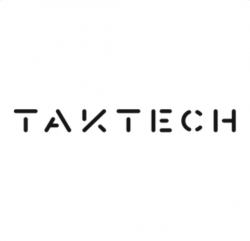 Marc Pajon
Marc PajonConsultant
TAKTECH SAS
France
Vehicle automation and system ergonomics challenges
 Xavier Chalandon
Xavier ChalandonHMI expert leader
Renault
France
The presentation will cover vehicle automation and system ergonomics screening, automation of driving and co-action issues, and situation awareness and back-in-the loop issues.
FVA: the French National AD program
 Dr Emmanuel Arnoux
Dr Emmanuel ArnouxAutomated Driving Safety & Validation Working Group co-leader
PFA
France
Ensuring safety in L3 AD systems with Porsche Engineering's Guardian
Dr Hagen Stübing
Senior manager for ADAS software development
Porsche Engineering
Germany
Senior manager for ADAS software development
Porsche Engineering
Germany
 Dr Clara Marina Martínez
Dr Clara Marina MartínezProject leader in ADAS function development
Porsche Engineering
Germany
The distinction between L2++ and L3 advanced driving systems is often blurred and overlooked. However, L3 systems introduce additional requirements for system safety, robustness and software architecture, posing significant challenges for many OEMs. Porsche Engineering's Guardian leverages years of experience in L3 safety and systems validation. This software component is designed to facilitate the transition from L2++ to L3, providing a robust, safe and standards-compliant solution. The Guardian's modularity allows for seamless integration into your existing system and serves as a high-level component that guarantees the safety of L3 trajectory planning.
What the audience will learn
- Challenges in the transition from L2 to L3 from a safety perspective
- State-of-the-art software architecture to guarantee the validation of your L3 system
- Flexible software component that facilitates the transition between L2 and L3
Regulatory updates for L2+ and more
 Fabrice Herveleu
Fabrice HerveleuAutomotive safety expertise department manager
UTAC
France
The purpose of this presentation is to highlight the current regulatory context for assisted and automated systems with regard to the driving task. The aim is to explain how the various regulatory bodies work together, and to present the principles of validation, throught the different pillars : safety audit, testing or simulation.
Lost cargo detection on highways – the ultimate challenge for L3 autonomous driving systems?
 Florent Meurville
Florent MeurvilleR&I team leader for product safety / senior expert, automated driving
Valeo
France
Detecting lost cargo on highways poses a critical and stringent challenge for Level 3 Autonomous Driving Systems (ADS), especially considering UN 157 (ALKS) requirements. This presentation will examine how functional safety and SOTIF considerations further complicate this task. We'll explore how to derive realistic acceptance criteria based on real-world accident data and translate them into concrete perception validation targets. The analysis will then map various collision avoidance maneuvers to their corresponding perception needs. Finally, we will evaluate the suitability of different sensor technologies to effectively meet these identified perception requirements for robust lost cargo detection.
L2+ ADAS as an intermediate step to AD mass production
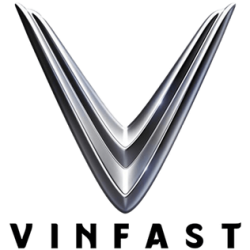 Dr Duong-Van Nguyen
Dr Duong-Van NguyenGlobal deputy CEO, in charge of ADAS/AD
VinFast
Germany
After the hype of autonomous driving, the automotive industry has understood that higher-level autonomy increasingly requires the involvement of AI-based solutions. Nevertheless, current brute-force AI solutions need a tremendous amount of data and are computationally expensive, which leads to the long-tail problem in self-driving and thus the questionable reliability and profitability of AV business. On the other hand, automotive mass-production needs to enhance driver safety and its own sustainability, and to have new products with new technology to attract end users. Younger generations are obsessed with high-tech and want to see more increased autonomy in their vehicles, so many Tier 1s and OEMs are paying great attention to autonomous parking, smart summon, auto-reverse and highway pilot. With the recent technological advancements in automotive SoC, computer vision and robotics, realizing these advanced functions at a great scale is feasible, and thus L2+ is considered a very good intermediate step to leverage the autonomy level.
TBC
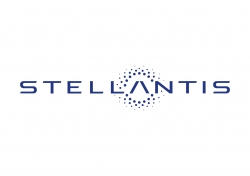 Vincent Abadie
Vincent AbadieSenior fellow ADAS and Autonomous Driving
Stellantis
France
Room 1
Real-world and integrated virtual testing
13:30 - 16:30
Software needs for the autonomous public transportation revolution
 Tino Müller
Tino MüllerExpert for system integration and processes
Hamburger Hochbahn
Germany
Shared autonomous services are transforming urban mobility, offering solutions to urbanization and climate challenges. For software and vehicle providers, addressing the specific needs of public transportation operators is key to creating impactful products. This presentation outlines the essential elements for developing autonomous public transportation services, drawing from the ALIKE project in Hamburg. Topics include designing accessible vehicles, navigating regulatory approval, creating user-centered digital booking experiences, increasing public acceptance and building efficient operational and software processes. Gain insights into the unique challenges and opportunities in integrating autonomous technology into public transportation systems to meet operator and passenger needs.
What the audience will learn
- Experiences from project ALIKE with partners Moia, VW and Holon
- The digital user experience in an autonomous public transportation service
- Software needs for managing an autonomous fleet
- Vehicle requirements for accessibility
- Insights from public acceptance studies
Pioneering project KIRA: the first Level 4 deployment in German public transportation
Thorsten Möginger
Head of new mobility
Rhein-Main-Verkehrsverbund Servicegesellschaft mbH
Germany
Head of new mobility
Rhein-Main-Verkehrsverbund Servicegesellschaft mbH
Germany
Autonomous driving will be key for the future of public transportation services. This session will highlight the potential of autonomous vehicles, focusing on the pioneering project KIRA (German for ‘AI-based regular operation of autonomous on-demand transport’), Germany's first Level 4 autonomous public transportation pilot. The project aims to integrate self-driving vehicles into the public transportation network in the Rhine-Main area. Currently, six vehicles operate autonomously in Darmstadt and the district of Offenbach, addressing driver shortages and contributing to the mobility transition. Based on KIRA, the presentation will provide valuable insights into technological and regulatory challenges while enhancing public transportation services.
What the audience will learn
- Main learnings within the KIRA project, technological and operational challenges, regulatory frameworks and strategies for enhancing user acceptance
- Insights into technological advancements and regulatory challenges faced during the implementation of the KIRA project
- Overview of the current state and future potential of autonomous driving technology in public transportation
- Approaches to scaling autonomous driving in Germany
Testing AD highway on-ramping with V2V support in the HiDrive project
 Markus Kremer
Markus KremerSenior system architect ADAS/AD
FEV.io GmbH
Germany
FEV.io GmbH participates in the HiDrive project and has developed and tested AD highway driving function with V2V support for on-ramping areas. The setup of the toolchain, the development process and the engineering framework will be introduced within the presentation. During the preparation of this function, a simulation environment and a systems engineering approach were used to improve the development with automated test case derivation and vehicle tests on the proving ground. All of these elements helped to improve the development time and helped to make the results of this part of the project a success.
What the audience will learn
- Efficient systems engineering with automatic derivation of test cases from SysML models
- AD function testing on several levels from MIL to vehicle
- V2V support for complex driving scenarios
- Vehicle testing for complex driving scenarios of autonomous driving functions
- Automatic OpenDRIVE and OpenSCENARIO file creation from SysML models
U-Shift: modern challenges of a Level 4 self-driving modular vehicle
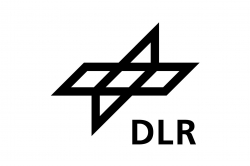 Eric Pohl
Eric PohlResearch associate
Deutsches Zentrum für Luft- und Raumfahrt eV German Aerospace Center
Germany
The DLR eV German Aerospace Center's Institute of Vehicle Concepts presents the architecture and challenges of the automated vehicle concept U-Shift. The presentation will provide an insight into the fully equipped sensor setup, autonomous stack architecture and safety concepts. Further, it will dive into the key challenges and the center's solutions for developing a modular vehicle with an automatic capsule changing system that does not feature any driver seat. This includes topics about sensor layouts for lidar, radar and camera, collective perception built on V2X, special driving cases like capsule docking and how to get a permit for BuGa23.
What the audience will learn
- U-Shift – on-the-road modular vehicle
- Sensor setup of lidar, radar and camera
- Safety concepts
- Collective perception
Switzerland's first Level 4 project
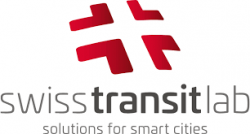 Matthias Rödter
Matthias RödterPresident of the board
Swiss Transit Lab
Switzerland
The presentation will outline the project's history and experiences from Level 2 until Level 3: how to innovate and align with restrictions; creation of an ecosystem; setting up a L4 project and go live.
What the audience will learn
- Real use cases versus technology
- Technology evaluation
- What to avoid
Room 2
Developments in scenarios, simulation, validation and in-the-loop testing
09:00 - 10:40
Leveraging LLMs for advanced applications in ADAS and AVs
 Prof Andry Rakotonirainy
Prof Andry RakotonirainyProfessor in ITS
Queensland University of Technology (CARRS-Q)
Australia
This presentation explores the transformative potential of large language models (LLMs) in shaping the next generation of advanced driver assistance systems and automated vehicle technologies. It will provide an overview of research conducted at the Centre for Accident Research and Road Safety – Queensland (CARRS-Q), focusing on the innovative integration of LLMs across diverse domains. These include applications in cooperative intelligent transportation systems (C-ITS), augmented reality interfaces, digital twin technology and tailored solutions for rural and remote environments. The presentation will highlight how these advancements can enhance road safety and inform future developments in ITS.
What the audience will learn
- Use of LLM in conjunction with ADAS
- Future research in LLM/ADAS/AV
- How OEMs can join forces with academia to improve safety
Homologation test setup in the lab
 Chandra Babu Kummara
Chandra Babu KummaraHIL engineer
Volvo Car Corporation
Sweden
Testing car safety functions is a challenging job. The lab setup is an efficient way to test different safety functions: we can perform repeated tests with the same scenario and road. The cost of testing is economical and reduces the test time. Car safety functions like AEB (autonomous emergency braking) and PI (pilot assist) can be tested in the lab. This presentation explains how we have performed in-lab safety function tests. This speeds up the homologation process for car safety functions.
What the audience will learn
- How homologation tests can be done in lab
- Testing car ADAS functions in lab using emulated solutions
- Demo of AEB and PI in the lab environment
- How lab tests can speed up the car safety functions homologation process
Validating perception and sensor fusion using reliable hardware-based data reprocessing
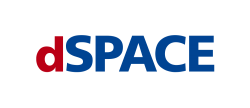 Gregor Hordys
Gregor HordysProduct manager
dSPACE
Germany
A comprehensive test strategy using sensor data is required to ensure the proper operation of computer vision-based perception and sensor fusion algorithms. This presentation highlights hardware-based data reprocessing as an essential method for validating perception. Major adaptation of recorded sensor data is needed during reprocessing to meet frequent software and hardware updates, board network changes and requirements like E2E security protection along the development process. The presentation also explains how to validate the proper function of replay systems, which can have a tremendous impact on test quality and development costs. Finally, a brief outlook on AI-supported testing is presented.
What the audience will learn
- When to pick hardware-based data reprocessing and why it should be made an integral part of the strategy for testing perception and data fusion ECUs
- The major advantages of adapting recorded data during reprocessing and why this can be a challenging task
- Challenges of using sensor interfaces in reprocessing testing and how to solve them
- How to prove the proper function of a data reprocessing system to further increase test quality
- How GenAI-based methods can help to reduce the costs of reprocessing real sensor data
Innovating automotive testing: a closed-loop simulation framework for embedded systems
Karoly Livius Bakos
System engineer
Robert Bosch
Hungary
System engineer
Robert Bosch
Hungary
Our presentation introduces a state-of-the-art closed-loop hardware-in-the-loop (HIL) simulation framework designed specifically for testing automotive embedded systems with real hardware. The focus of our project is the front video camera system from Bosch GmbH’s advanced driver assistance systems product line. We present design, tools, architecture, methods and proof of concept, while highlighting the management challenges encountered. Our research with the project no. 2019-1.1.1-PIACI-KFI-2019-00129 has been implemented with the support of the Ministry of Culture and Innovation of Hungary from the National Research, Development and Innovation Fund.
What the audience will learn
- Bosch ECU testing environment and tools
- Development goals and strategy for closed-loop simulation
- HIL infrastructure and challenges in data injection to video ECUs
- Sub-model design and development for 3D rendering, vehicle dynamics and CAN simulation
- Introduction of a proof of concept for implementation of closed-loop system for testing automotive embedded systems with real hardware
Room 2
Regulations, standards, homologation and certification (continued)
11:10 - 12:50
Meeting NHTSA FMVSS 127 at a reasonable price tag
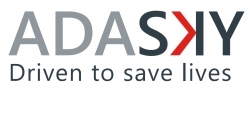 Sharon Fiss
Sharon FissDirector of sales engineering
Adasky
Israel
NHTSA FMVSS 127 will become mandatory for SOP 2029 vehicles. US NCAP declared the new tests and probably EURO NCAP will follow. This means RFQs for improved AEB systems need to be published in 2025, latest 2026. The thermal camera industry is offering now cameras with reduced (but enough) performance to pass the tests at an indicative price tag of US$100 per camera. Focusing on lowering the imager resolution is one thing, but many other elements must be considered. The presentation will elaborate on these elements.
What the audience will learn
- The relevance of tehrmal cameras for NHTSA FMVSS 127
- The challange and key factors to note when embracing a thermal camera
- Ways to reduce BOM
From DCAS to ADS: the new paradigm for type approval
 Jamie McFadden
Jamie McFaddenHead of Automated Vehicle Technologies Group
Vehicle Certification Agency
UK
The new UNECE Regulation No. 171 on driver control assistance systems (DCAS) established new minimum safety requirements for vehicle systems that assist drivers in longitudinal and lateral vehicle motion control. This presentation will analyze key elements of the DCAS regulation, in particular highlighting the innovative multi-pillar assessment approach to system design, physical testing and virtual testing. It will use this to discuss the anticipated evolution of the certification process and explain the future approach for type approval of automated driving systems (ADS).
What the audience will learn
- Understand the background that has led to the adoption of DCAS regulation
- The core elements of the multi-pillar approach to the DCAS regulation
- The transition to more comprehensive evaluations for the ADS regulation
- Understand ADS type approval in the UK in the context of the legal framework introduced by the Automated Vehicles Act 2024
Panel Discussion - Driver Control Assistance Systems (DCAS): Are we going far enough?
The United Nations Economic Commission for Europe (UNECE) World Forum for the Harmonization of Vehicle Regulations (WP.29) in March 2024 adopted the Driver Control Assistance Systems (DCAS) regulation – R171. It entered into force at the end of September 2024. This Regulation ensures improved safety and performance for driver assistance systems. Within the regulation, there has been extensive discussion around the concept of System-Initiated Manouevres (SIM), especially for a driver hands-off situation, which has been kept out of the regulation due to safety concerns.
This panel session will bring diverse viewpoints from industry, academia and regulation who would discuss and debate the accuracy and applicability of evidence for both preventing and going ahead of the hands-off SIM concept in the DCAS regulation.
 Prof Siddartha Khastgir
Prof Siddartha KhastgirHead of verification & validation, Intelligent Vehicles
WMG, University of Warwick
UK
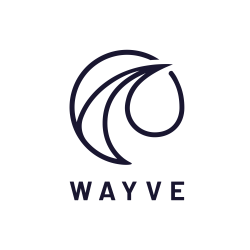 Dr Sarah Gates
Dr Sarah GatesDirector of public policy
Wayve
UK
Room 2
Safety innovations and best practices for their development and deployment
13:55 - 16:30
Safety-Coach: a new safety function to address road safety issues
 Thierry Hermitte
Thierry HermitteExpert in road safety
Ampere Software Technology (Renault Group)
France
Most studies in road safety show that more than 90% of fatal crashes are caused by human driver factors. The most common causes include risky driving behaviors, alertness and impaired driving. Based on data collected through existing vehicle sensors, the Safety-Coach identifies risks through four indicators directly related to the main human driver-related accident causation factors: speed, safety distance, vigilance and risky driving behavior. Each indicator is computed in real time, according to the risks identified by the vehicle's sensors, and displayed to the driver. To improve the driver's behavior, pertinent advice related to taken risks is proposed.
What the audience will learn
- New safety system dedicated to the improvement of driver's behavior
- Driving risk analyzed in real time
- Dedicated advice proposed for the driver-related risk taken
- Safety system proposing educational role toward more safe driving
Scalable hardware integration in autonomous vehicle development
 Gustavo Javorski
Gustavo JavorskiSpecialist geometrical architect
Volvo Autonomous Solutions AB, part of Volvo Group
Sweden
This presentation will explore the presenter's experience with hardware integration in autonomous vehicle development aiming for scalabilty, focusing on the Common Architecture and Shared Technology (CAST) framework. It will discuss the unique challenges posed by long lead times for brackets and wiring harnesses in a rapidly evolving development environment and share challenges experienced during the integration process, such as handling the lack of requirements due to new technology, ensuring seamless, scalable integration of hardware components, stable interfaces and particularities of sensor and computing components.
What the audience will learn
- Scalable hardware integration in autonomous vehicles
- Insights into the CAST framework
- Managing long lead times for critical components in a software-centric environment
- Addressing new aspects in automotive hardware development due to autonomous transportation
TBC – GAIA ENVITED-X Data Space
 Carlo van Driesten
Carlo van DriestenSystems architect for virtual test and validation
BMW Group
Germany
 Alexander F Walser
Alexander F WalserManaging director
Automotive Solution Center for Simulation e.V.
Germany
EU V4Safety: using simulation for safety in a proper way
 Sytze Kalisvaart
Sytze KalisvaartSenior project manager StreetWise
TNO
Netherlands
If we want to estimate safety gains with simulation, how can we do this properly? There are choices in scoping, shaping and configuring a safety study with simulation. And how to model the current situation?
V4Safety has set up a framework for prospective safety assessment using simulation. It provides instructions to make studies more transparent and comparable. Built on ISO 21934, it provides methods for baseline and an extensive overview of human models for simulation of human behavior in everyday and critical situations. The framework covers safety measures in policy, infrastructure and technology, demonstrated in nine vehicle-VRU use cases.
What the audience will learn
- What are the key steps in the V4Safety framework for prospective safety assessment with simulation?
- How to choose and elaborate a baseline approach?
- What are the key results from the V4Safety use cases with vulnerable road users?
Safety assessment framework for autonomous vehicles using digital-twin-based testing
 Dr Vimal Rau Aparow
Dr Vimal Rau AparowAssistant professor
University of Nottingham Malaysia
Malaysia
Safety assessment has become one of the major interests in most developing countries to reduce road accidents and minimize traffic congestion. This has increased the need for conducting safety testing for autonomous vehicles (AVs) before actual deployment in real-world environments. In Malaysia, a guideline has been established for public road trials of AVs. However, these documents do not focus on a testing framework to evaluate the safety and security of AVs based on Malaysian driving scenarios. Therefore, a safety assessment framework has been developed that consists of five stages to evaluate the overall performance of AVs before deployment in real-world environments.
What the audience will learn
- Current trend for autonomous vehicle development in Southeast Asia countries
- Challenges for deployment of autonomous vehicle in developing countries
- Safety assessment framework for autonomous vehicles
- Integration of international standards for standard development
- Application of digital twin for safety testing